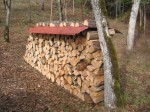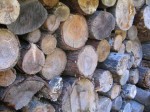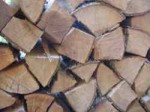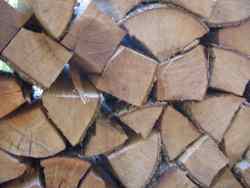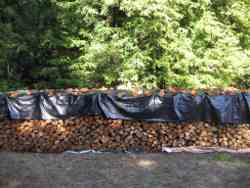I hear it a lot from firewood buyers, it is hard to find a good reliable source of dry firewood in the area. It is an all too common story. People say they order wood from someone who assures them it will by dry, but when they get it, they are disappointed that it is anything but dry. Then they have to spend the rest of the winter trying to burn wet wood.
A lot of firewood dealers may not care that what they are selling is not dry. Many just don’t want to hold onto their inventory for a full year to let it dry before they can sell it. But lot of suppliers may not even realize their wood is not dry. Many people who sell firewood are just trying to make extra money and they really don’t know what they are doing. They don’t know if the wood is fully seasoned or not or even what a full cord is. They just happen to be someone with a chainsaw, a pickup, and a source of wood and they need the money.
The Solution
Firewood is a great way to heat your home, but if you do choose this source of heat, realize that you are going to have to take charge a little if you want to have a steady supply of dry wood. Most people wait until the last minute and start looking for dry wood in the late summer or fall, and some wait until after it is cold and they needed it yesterday. But my more experienced customers know not to follow the masses. Instead, they buy their wood in the spring or early summer when most people are not even thinking about firewood.
They do this because they know that if they buy it then, it will then have plenty of time to dry before winter. So it doesn’t matter if I bring them wet or green wood. Most of them actually prefer to buy it green because green wood costs less, it is usually cleaner, with fewer bugs, mold and fungus. And since fewer people are buying early in the year, you can get it when supplies are more available and when the weather is more favourable in the woods for cutters to be producing wood.
If you want dry wood, spring or early summer is the best time to buy. It is great to give wood a full year to dry, but most wood only needs a summer to dry since it does most of its drying in warm dry weather. Some prefer to only let it dry over the summer and avoid having damp wood sitting around all winter where it can attract bugs and debris to later bring into your home.
Either way is good, as long as you are giving it at least a full summer to dry and have a good place to dry it. Otherwise you are taking a big gamble expecting firewood dealers to bring you dry wood at the last minute.
Buy firewood in Humboldt County
Why it is So Hard To Find Reliable Dry Firewood For Sale
I sold out of dry wood early in the summer last year, so I didn’t have dry wood available for those who usually buy it before winter. I just didn’t cut as much wood early in the year to dry last year, since I had other business to tend to. This is the nature of the firewood business. Supplies of dry wood will not always be reliable.
Firewood is not usually a mass produced commodity. Electricity, natural gas, oil, and even wood pellets have well established nation wide and world wide distribution systems. This makes these commodities always available on demand. This is not at all the case with firewood. Firewood is a product that is usually produced by local small operations, sometimes one person doing it just because they are out of work or to make extra money. It is a tough business to be in and most suppliers will come and go. You may find a reliable source for a while, but they probably won’t last forever.
In order to bring you dry wood, a wood cutter will have to cut large amounts of wood months ahead of time, and then wait for it to dry before it can be sold, and before they can make a dime on it. Most cutters are more interested in paying the bills now and aren’t going to cut and split that much wood knowing they won’t be paid for many months or a year later. And huge piles of wood in a wood yard don’t dry nearly as fast as a small amount stacked at your home will. It is hard to get good air circulation in a big pile of wood to dry it.
